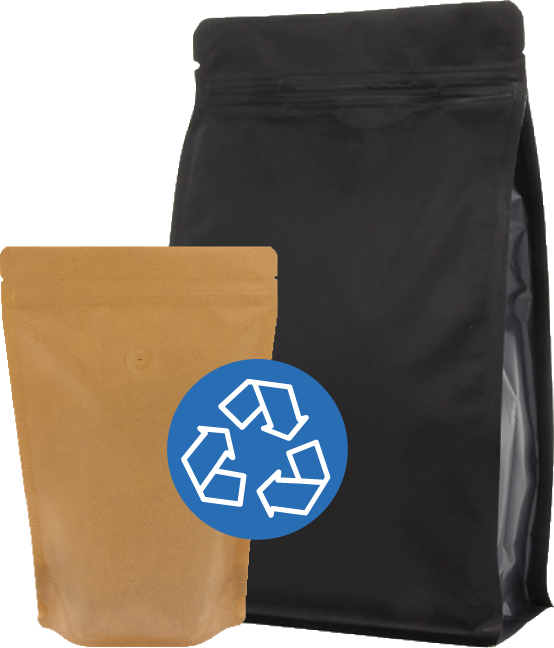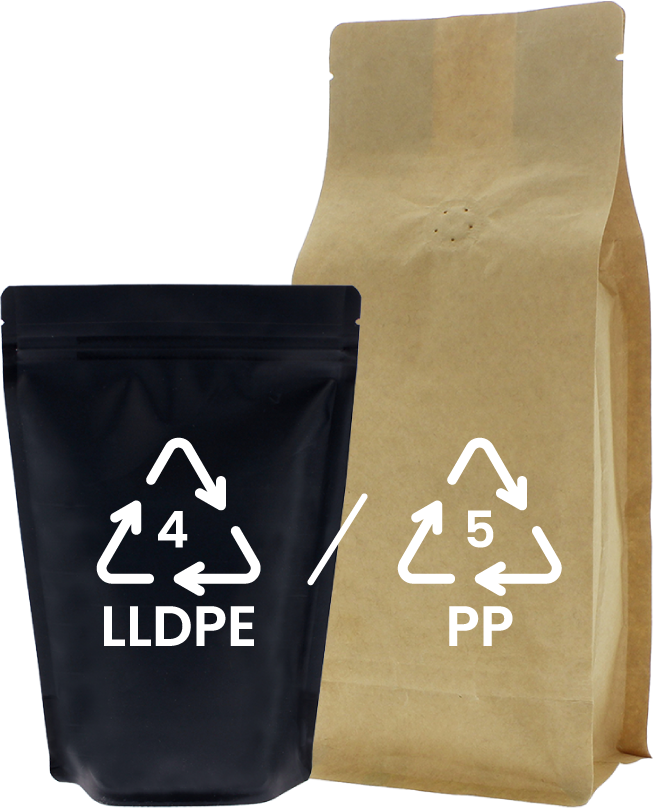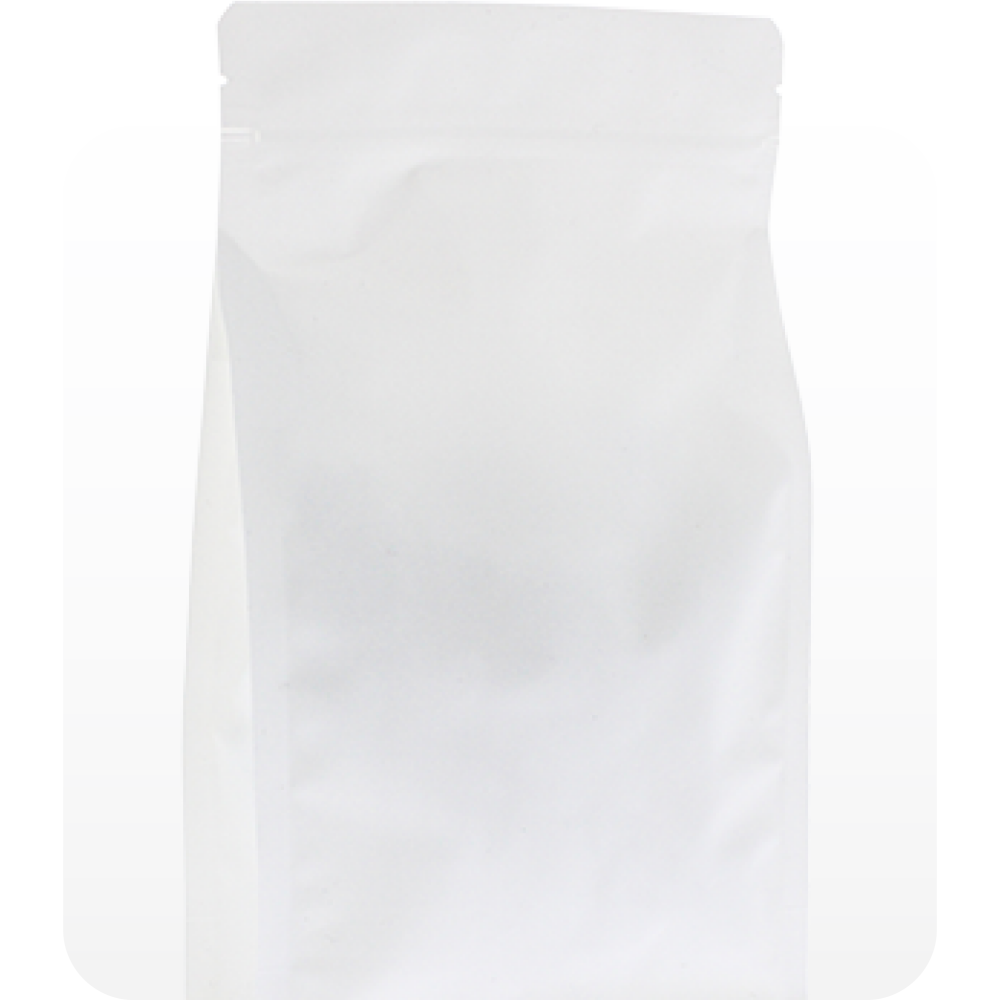Your sample cart is empty
What are mono materials?
Monomaterials are made entirely from one material type, like plastic, paper, or aluminum. They do not contain layers of different materials, which makes them easier to recycle.
Our monomaterial stand-up pouches use a single plastic family, either polyethylene, PE, or polypropylene, PP. They can have multiple layers, but always within the same material family. This keeps the pouch recyclable and still protects your product well. By adding EVOH, we achieve a high barrier against oxygen and moisture.
Choose monomaterial if you want to support a circular economy without compromising on quality or protection.

How mono materials fit into the recycling system
A key reason monomaterials are used more and more is their simplicity. The simpler a pack is built, the better it usually fits existing waste systems. In recycling, it is all about recognizability, sortability, and reusability of materials. Material choice plays a big role here.
Multilayer structures
Stand-up pouches with a multilayer build, for example a plastic pouch with an aluminum barrier layer or a paper outer, are often designed for extra protection or shelf appeal. Combinations like a plastic window in a paper bag, or a paper bag with a plastic sealing sticker, may look harmless, but they can cause confusion at end of life. The materials are hard to separate, for consumers and for sorting machines. As a result, the material can end up in the wrong waste stream, or not be recycled at all.
Mono structures
Monomaterial stand-up pouches are simpler. They are made from one plastic type. This makes them easier to recognize and sort in waste facilities. Because the material is not mixed with other layers, it stays more useful for recycling. The chance of actual reuse is higher than with mixed-material packs.
Want to know how this works in practice? Also read our page on recyclability.
Is monomaterial right for your product?
When we talk about sustainable packaging, the focus often goes to the material, is it recyclable, compostable, or made from renewable resources. That is only part of the story. Packaging also protects products from damage, spoilage, or quality loss. If protection falls short, the resulting waste can have a much bigger environmental impact than the packaging itself.
Take coffee as an example. Producing one kilogram of coffee beans takes about 18,900 liters of water. The packaging in comparison, a flexible pouch of roughly 26 grams of film is enough to pack 1 kg of coffee. Producing that amount of plastic requires an estimated less than 6 liters of water, based on an average water footprint of 183 liters per kilogram of plastic, source, The Water Footprint Network.




Monomateriaal is dé stap naar duurzamer verpakken. Of het past bij jouw product, hangt af van zaken zoals de eigenschappen van je product en hoe het wordt verwerkt in de keten. Als de toepassing klopt, biedt een monomateriaal-stazak duidelijke voordelen voor recycling en hergebruik.
Twijfel je of monomateriaal geschikt is voor jouw product? Neem gerust contact met ons op. We denken met je mee en vinden samen een oplossing die werkt én duurzaam is.
Of bekijk direct ons mono material range right away, with different sizes, styles, and finishes.
Want to know more or have questions? Contact us - we'll be glad to help!







